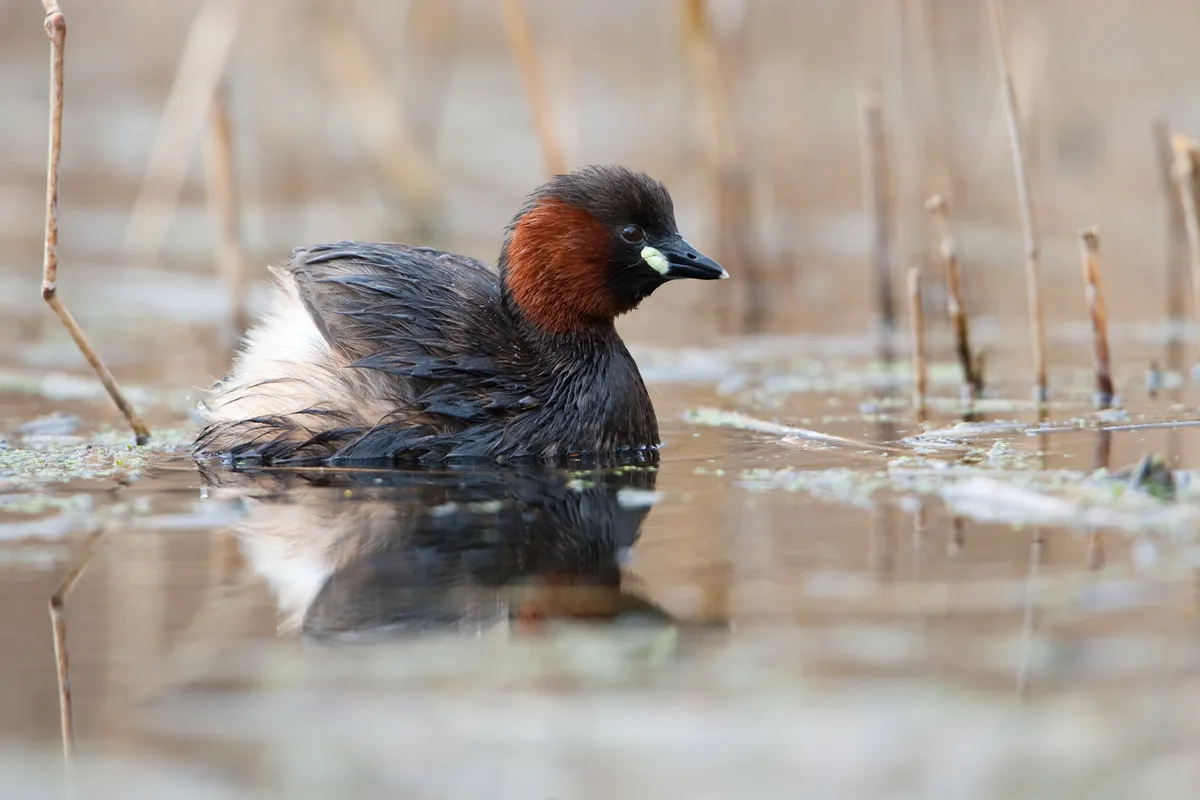It’s easy to miss a little grebe (Tachybaptus ruficollis). It is only slightly larger than a duckling, and certainly smaller than a moorhen or an adult duck.
Not only is it small, as you’d gather from the name, it is also rather shy and dives a great deal, popping up some distance away from where you first see it.
In this guide we take a closer look at the little grebe, revealing what it looks like, where you can see it, nesting habits, call and plumage.
Interested in learning more about Britain’s waterbirds? Read our guides to wading birds, swans, rails and geese.

- Guide to British seabirds: how to identify and where to see them
- Tern guide: UK species and how to identify them
- British duck guide: identification, species, facts and where to see
How to identify the little grebe
Credit: Nuts about Birds
If you get a decent look at a little grebe, you will see a bird with a white, fluffy tuft of feathers at the rear. It could almost be described as a floating rabbit. It is quite tailless, and plump with it, yet it has a thin neck and small head, with a short bill. The shape is very distinctive.
In summer its neck assumes a glorious chestnut colour and there is a pale greenish-yellow patch at the base of the bill. In winter it is the least contrasting and brownest of the grebes.
Little grebe diet

One of its country names is the Dabchick, which derives from “Dip Chick,” the chick that dives.
In common with all grebes, it procures its food underwater, propelled by its lobed feet, which are set well back. It eats fewer fish than other grebes, incorporating many other foodstuffs such as insects and their larvae, plus snails into its diet. Such food is easy to find in richly vegetated water with masses of plants.
Little grebe habitat

This is a bird of sheltered waters. You often see it on ponds, the edges of lakes, in marshes, slow-flowing rivers and canals.
Little grebe call
You would perhaps the little grebe entirely if it wasn’t for its most extraordinary call. It is a kind of crazy-sounding whinny, a tittering, a little like a pony, but with a laughing quality – there isn’t anything quite like it. The tittering is often a duet between a pair. It begins high and goes down the scale.
Little grebe populations
The little grebe is common in the UK, with 5,000 breeding pairs, 150,000 in winter.
